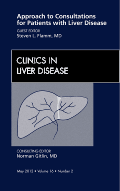
Clinics in Liver Disease
Scope & Guideline
Connecting researchers and clinicians for liver health advancements.
Introduction
Aims and Scopes
- Portal Hypertension:
The journal covers extensive research on portal hypertension, including its pathophysiology, complications, management strategies, and surgical interventions. - Hepatic Encephalopathy:
A significant focus on hepatic encephalopathy is evident, exploring its clinical manifestations, management strategies, and the socio-economic burden it imposes on healthcare systems. - Autoimmune Liver Diseases:
The journal addresses various autoimmune liver diseases such as autoimmune hepatitis and primary biliary cholangitis, focusing on their pathophysiology, diagnosis, and treatment options. - Chronic Viral Hepatitis:
Research on chronic viral hepatitis, particularly hepatitis B and C, is a core area, highlighting new therapies, epidemiology, and management challenges. - Nonalcoholic Fatty Liver Disease (NAFLD):
The journal discusses NAFLD extensively, including its epidemiology, pathogenesis, and the impact of associated conditions such as metabolic syndrome. - Liver Transplantation:
The scope includes discussions on liver transplantation, donor selection, complications, and post-transplant management, reflecting its critical role in hepatology. - Acute-on-Chronic Liver Failure:
Research on acute-on-chronic liver failure is prominent, examining its clinical spectrum, management challenges, and therapeutic innovations. - Endoscopic and Interventional Procedures:
The journal includes studies on endoscopic and interventional radiology techniques for managing liver diseases, emphasizing minimally invasive approaches.
Trending and Emerging
- Noninvasive Assessment Techniques:
There is a growing emphasis on noninvasive assessment methods for liver diseases, particularly in evaluating fibrosis and portal hypertension, as they offer safer alternatives to traditional methods. - Integrated Management of Hepatic Encephalopathy:
Increased focus on integrated management strategies for hepatic encephalopathy highlights the need for comprehensive care that addresses not only clinical symptoms but also social and economic factors. - Innovative Therapies for Autoimmune Liver Diseases:
Research into novel therapies for autoimmune liver diseases is on the rise, reflecting advancements in treatment options and a better understanding of disease mechanisms. - Genetic and Metabolic Factors in Liver Disease:
Emerging research is focusing on the genetic and metabolic underpinnings of liver diseases, particularly in relation to NAFLD and its systemic implications. - Portal Hypertension Complications:
A significant increase in studies addressing the various complications associated with portal hypertension indicates an expanding understanding and management of this complex condition.
Declining or Waning
- Traditional Hepatitis Management:
There has been a noticeable decline in papers focusing on traditional management strategies for hepatitis, as newer, more effective treatments and approaches are being developed and adopted. - Alcoholic Liver Disease Research:
Although still relevant, the volume of research specifically addressing alcoholic liver disease has decreased, possibly due to a shift towards more comprehensive metabolic liver disease studies. - Chronic Kidney Disease in Liver Disease:
Research specifically linking chronic kidney disease with liver disease has waned, likely as more attention is directed toward integrated approaches that encompass broader aspects of liver health. - Liver Biopsy Techniques:
The frequency of papers discussing liver biopsy techniques has decreased, likely due to the increasing reliance on noninvasive diagnostic methods. - Emerging Biomarkers in Liver Disease:
Research on emerging biomarkers for liver disease diagnosis and prognosis has seen a decline, possibly overshadowed by advancements in imaging and noninvasive testing.
Similar Journals

Canadian Journal of Gastroenterology and Hepatology
Advancing Knowledge in Gastroenterology and HepatologyCanadian Journal of Gastroenterology and Hepatology, published by HINDAWI LTD, serves as a vital resource in the fields of gastroenterology and hepatology. Since its inception in 1987, this open-access journal has made significant contributions to advancing research and clinical practice through its comprehensive coverage of topics ranging from liver diseases to gastrointestinal disorders. With an impressive Q2 ranking in Gastroenterology and a Q3 ranking in Hepatology as of 2023, the journal has established itself as an influential platform for researchers and healthcare professionals seeking to disseminate and acquire knowledge. The journal is based in Egypt, with its operational headquarters located in London, England. Notably, it holds a respectable standing in Scopus rankings, placed at Rank #64 in Gastroenterology and Rank #34 in Hepatology, reflecting its impact and relevance in the medical community. With a commitment to quality and accessibility, the Canadian Journal of Gastroenterology and Hepatology continues to foster innovation and collaboration among its readers.

Gut and Liver
Elevating standards in Gastroenterology and Hepatology.Gut and Liver is a prestigious peer-reviewed journal dedicated to advancing the fields of Gastroenterology and Hepatology. Published by the EDITORIAL OFFICE GUT & LIVER in South Korea, this Open Access journal has been disseminating valuable research findings since 2007, making critical knowledge accessible to a global audience. With an impressive 2023 impact factor that places it in Q1 rank in both Gastroenterology (#28/167) and Hepatology (#22/82), it is recognized as a leader in the medical domain. The journal covers diverse topics, including innovative therapeutic strategies, clinical practices, and groundbreaking research in liver diseases and gastrointestinal disorders, thereby playing a vital role in improving patient care and outcomes. Researchers, healthcare professionals, and students can benefit from the journal's wealth of information, designed to foster collaboration and spark new ideas within the scientific community. For further engagement with current research, readers can access issues from 2009 to 2024 and stay updated on the latest advancements in the field.
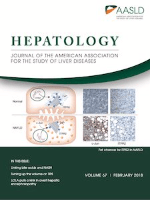
HEPATOLOGY
Connecting experts to foster collaboration in hepatology.HEPATOLOGY is a premier scholarly journal dedicated to advancing the field of liver research and clinical practice. Published by Lippincott Williams & Wilkins, this journal boasts an impressive impact factor and holds a prestigious position as one of the top-ranked publications in both Hepatology (Q1) and Medicine (miscellaneous, Q1) categories as of 2023. HEPATOLOGY, with its commitment to disseminating high-quality research since its inception in 1981, serves as an essential platform for researchers, clinicians, and students focusing on liver diseases, including hepatitis, cirrhosis, and liver cancer. The journal's editorial board comprises leading experts who guide the publication towards its objective of fostering innovation and collaboration in this critical area of health. Although it does not offer an open access model, HEPATOLOGY ensures that its comprehensive analyses, reviews, and groundbreaking studies are accessible to the global medical community. Join the discourse in hepatology and be a part of a transformative journey through this indispensable resource.

Korean Journal of Gastroenterology
Uniting Experts for Enhanced Digestive Health SolutionsKorean Journal of Gastroenterology (ISSN: 1598-9992, E-ISSN: 2233-6869), published by the Korean Society of Gastroenterology, has been a premier outlet for research and advancements in the field of gastroenterology since its inception in 1968. This open-access journal, based in South Korea, fosters a global dialogue on gastrointestinal health, embracing contributions from a diverse array of disciplines within medicine. It is currently ranked in the Q4 quartile for miscellaneous medicine and holds a Scopus rank of #323 out of 636 in general medicine, reflecting its commitment to publishing impactful research despite its relatively recent establishment in high-impact metrics. With a continuous publication timeline extending through to 2024, the journal aims to enhance understanding of gastrointestinal disorders and promote innovative treatments, making it an essential resource for researchers, clinicians, and students alike who seek to stay abreast of the latest developments and clinical applications in gastroenterology.
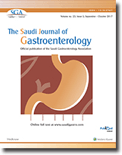
Saudi Journal of Gastroenterology
Championing open access to vital gastroenterological findings.The Saudi Journal of Gastroenterology is a premier platform dedicated to advancing research and clinical practice in the field of gastroenterology. Published by Wolters Kluwer Medknow Publications, this open-access journal has been serving the academic community since 1995 from its base in India. With an ISSN of 1319-3767 and an E-ISSN of 1998-4049, the journal allows unrestricted access to a wealth of knowledge, fostering an environment where researchers, professionals, and students can engage with cutting-edge studies. As of 2023, it is categorized in the Q3 quartile within gastroenterology, ranking #74 out of 167 in Scopus, which places it within the 55th percentile of its field. The journal aims to disseminate significant findings, clinical trials, and innovative theories that shape the understanding of gastrointestinal disorders and practices. With a commitment to quality and relevance, the Saudi Journal of Gastroenterology is pivotal for anyone seeking to enhance their knowledge and expertise in this vital area of medicine.

Journal of Gastrointestinal and Liver Diseases
Connecting Researchers to Transform Digestive HealthThe Journal of Gastrointestinal and Liver Diseases, published by MEDICAL UNIV PRESS in Romania, serves as a pivotal platform for the dissemination of significant research in the fields of gastroenterology and hepatology. Established in 2006, this journal has evolved over the years, currently holding a Q3 rank in Gastroenterology and a Q2 rank in Medicine (miscellaneous), reflecting its commitment to high-quality scholarship and impactful contributions to medical science.
With an ISSN of 1841-8724 and an E-ISSN of 1842-1121, the journal engages a diverse readership of researchers, clinicians, and students passionate about advancing knowledge in gastrointestinal and liver health. While it currently does not operate under an open access model, the journal remains a vital resource for those seeking to stay updated on the latest developments and emerging trends in the field. As it converges towards a broader impact, projected through its coverage until 2024, the Journal of Gastrointestinal and Liver Diseases continues to contribute to the academic landscape, encouraging innovation and comprehensive understanding in digestive health.
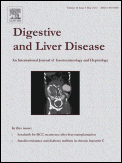
DIGESTIVE AND LIVER DISEASE
Connecting professionals through groundbreaking studies.DIGESTIVE AND LIVER DISEASE is a prominent journal published by Elsevier Science Inc, dedicated to advancing the field of gastroenterology and hepatology. With an ISSN of 1590-8658 and an E-ISSN of 1878-3562, this journal has established itself as a significant resource within the academic community, especially considering its Q2 ranking in both gastroenterology and hepatology categories as of 2023. Spanning from 2000 to 2024, the journal presents a diverse array of peer-reviewed articles, clinical studies, and review papers that explore the latest advancements and research findings in digestive and liver diseases. The journal's robust impact, reflected in its Scopus rankings—40th out of 167 in gastroenterology and 28th out of 82 in hepatology—highlights its critical role in shaping practices and understanding in these vital areas of medicine. With open access options available, DIGESTIVE AND LIVER DISEASE aims to make high-quality research accessible to a wider audience, thereby encouraging collaboration and innovation. Researchers, healthcare professionals, and students alike will find valuable insights into the complex mechanisms, diagnostics, and therapeutic strategies pertinent to digestive and liver health.
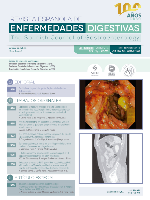
REVISTA ESPANOLA DE ENFERMEDADES DIGESTIVAS
Pioneering research for a healthier digestive future.REVISTA ESPANOLA DE ENFERMEDADES DIGESTIVAS, a pivotal Open Access journal published by ARAN EDICIONES, S A, has been at the forefront of advancing the field of gastroenterology since its inception in 1990. With a robust commitment to disseminating high-quality research, the journal provides a platform for researchers, clinicians, and students to share innovative findings and insights concerning digestive diseases. The journal is characterized by its Q3 ranking in both Gastroenterology and Miscellaneous Medicine categories, indicative of its significant contributions to these fields, and is positioned within the 36th percentile of Scopus rankings for medicine related to gastroenterology. Based in Spain, REVISTA ESPANOLA DE ENFERMEDADES DIGESTIVAS has embraced the Open Access model since 2004, ensuring that its articles are readily available to a global audience without financial barriers. The journal not only supports academic discourse but also plays a crucial role in improving clinical practices and health outcomes related to digestive health.

HEPATOLOGY RESEARCH
Bridging research and practice for improved patient outcomes.Hepatology Research, ISSN 1386-6346 and E-ISSN 1872-034X, is a premier academic journal published by Wiley that serves the dynamic fields of Hepatology and Infectious Diseases. With an impressive 2023 impact factor and ranked Q2 in Hepatology and Q1 in Infectious Diseases, this journal stands out as a vital resource for researchers, professionals, and students. Covering a broad spectrum of topics related to liver health, the journal aims to disseminate cutting-edge research and insights from the converged years of 1997 to 2024. As an open-access platform, it fosters the global sharing of knowledge, providing valuable access to pioneering studies that address pressing issues in liver disease and its associated infections. Based in the United Kingdom, at 111 River St, Hoboken, NJ, Hepatology Research is pivotal for advancing scientific understanding and improving patient outcomes worldwide.

Gastroenterologia y Hepatologia
Unveiling insights that shape the future of digestive health.Gastroenterologia y Hepatologia, published by Elsevier España SLU, is a distinguished journal dedicated to advancing the fields of gastroenterology and hepatology. With a publication history spanning from 1982 to 2024, this journal is recognized for its commitment to disseminating high-quality research and reviews that address critical developments in the diagnosis and treatment of gastrointestinal and liver diseases. Although it currently ranks in the Q3 quartile in both gastroenterology and hepatology based on the 2023 metrics, the journal continues to attract a global audience of researchers, healthcare professionals, and students eager to engage with the latest findings. The journal is accessible in both print and electronic formats (ISSN: 0210-5705), making its valuable insights reachable to a broad spectrum of subscribers. By fostering a platform for rigorous scholarly communication, Gastroenterologia y Hepatologia plays a vital role in shaping the future of research in these essential medical fields.